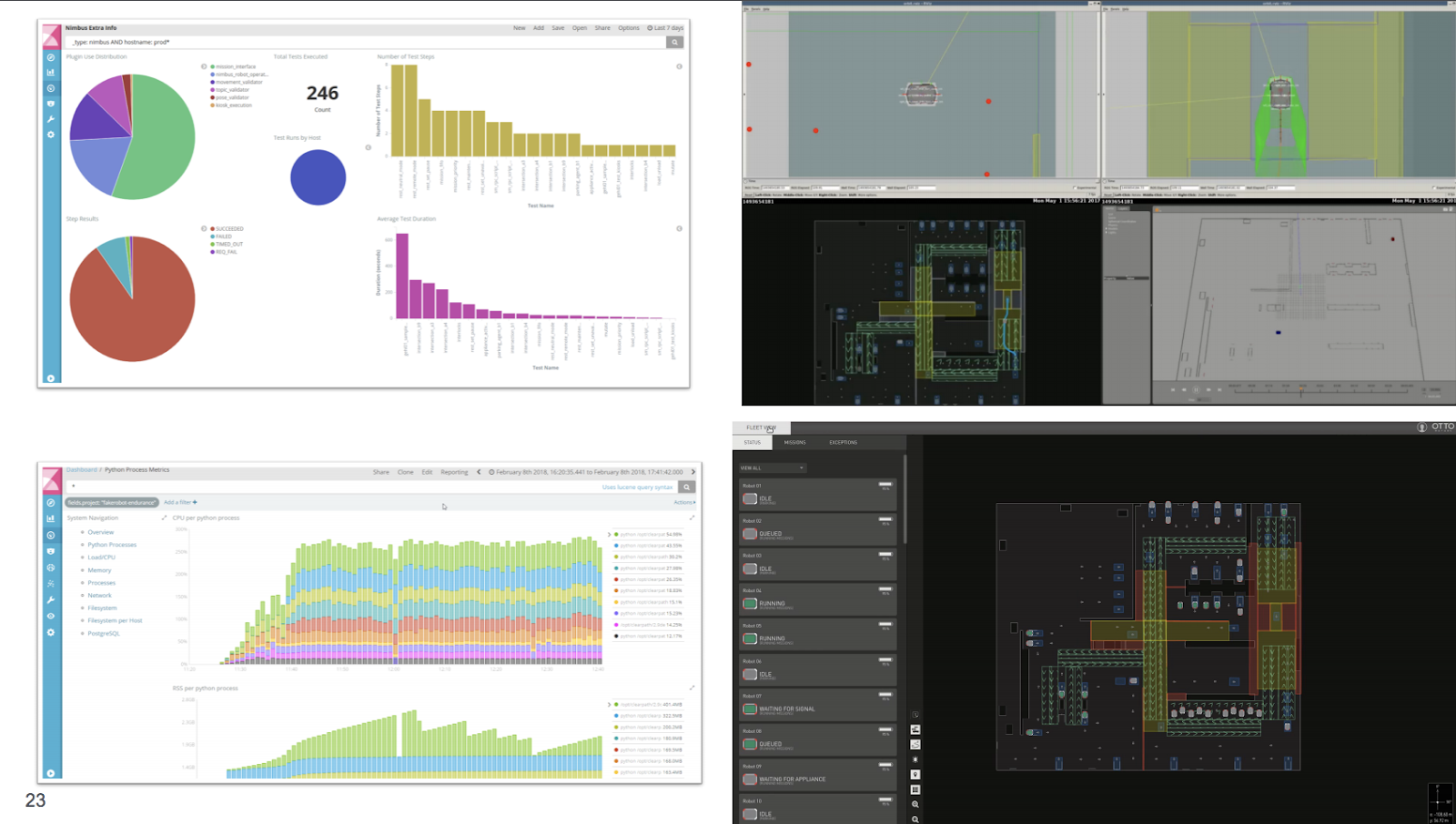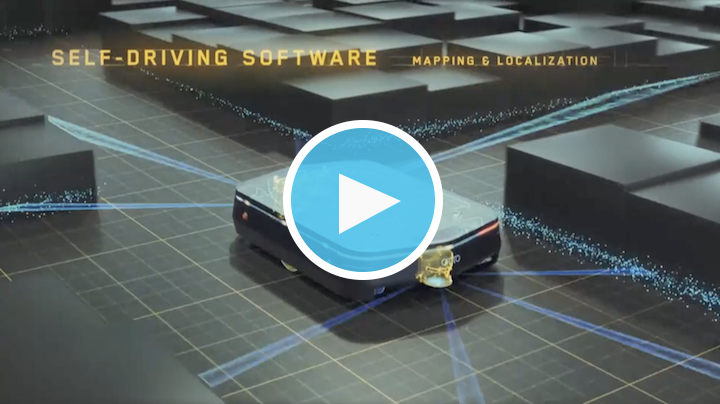OTTO Motors: Using the Elastic Stack to Expand the IoT Landscape
This post is a recap of a user talk given at Elastic{ON} 2018. Interested in seeing more talks like this? Check out the conference archive or find out when the Elastic{ON} Tour is coming to a city near you.
OTTO Motors — a part of Clearpath Robotics — designs, manufactures, and operates self-driving industrial vehicles. Their goal is to use robotics to make human-driven operations obsolete. Their mobile robot fleet operate in over 40 countries, allowing companies to automate work, including some that would otherwise be dangerous for humans.
Operating so many robots requires a management system that can identify problems quickly, improve development speed, industrialize solutions at cost, and easily connect to IoT technology. OTTO Motors also relies on intelligent path planning, which requires high volumes of data points to be processed live, so that robots know how to get from A to B at both an individual unit and fleet level.
OTTO Motors needed a full stack solution that could be tested without huge expense or the need to build new technologies, and that would plug easily into existing software already in use within the company. While searching for a solution that fit all this criteria, the OTTO Motors team made a survey of the wide, IoT solution landscape. “We wanted something quick,” says Greg Jacobs, former Manager of Infrastructure at OTTO Motors. “Turns out Elastic was the best thing to start with.”
Ultimately, the team at OTTO Motors chose the The Elastic Stack for three key reasons:
- Elastic’s products have HTTP/JSON APIs readily available for use. With the Elastic Stack, it was easy to get data into the service because it played nicely with other existing internal products and services already in use. In addition, Elastic provided easy-to-use client libraries and rich data collection options.
- A single computer could be used to install and run the Elastic Stack, and out-of-the-box was an independent system, nothing else needed to be built to be off to the races. From the install, it was easy to get started, explore, start plugging things in with the Elastic Stack, and scale as OTTO Motors’ needs grew.
- KIbana is web-based, easy to use, and well-integrated for use by a variety of end users/use cases, making it useful across the entire company.
Again, Greg Jacobs: “[The Elastic Stack] was the seed to plant. But it isn’t going to be something that grows into (just) a walled (off) garden. It will work with all the other stuff.”
To that end, OTTO Motors moved beyond simply using the Elastic Stack for IoT applications, and deployed it to help with software development QA, IT security, and building dashboards for exploratory reports. For example, automated systems for testing robots at OTTO Motors makes virtual docker containers to create Lidar data that the robots read as real obstacles. Elastic also allows OTTO Motors to perform high-speed simulations that the robots can complete instantaneously. This allows OTTO Motors to exercise their fleet management software at hundreds, if not thousands of times faster than normal speed, all while using Metricbeat and other tools provided by Elastic to test for issues within the system.

Running a large fleet of robots produces a massive amount of data which is fed to Elastic. The amount of data collected by OTTO Motor robots is overwhelming: over 5k data points every 10 seconds for every robot in a fleet. This includes CPU time, WiFi signal, motor temperature, navigation details, and more. And they use Elastic to aggregate all that data into 30 minute reporting windows.
OTTO Motors also uses Elastic’s monitoring feature to create custom dashboards to discover hidden trends, see what indices are being hit hardest, and to learn what’s popular with users.
The Otto Motors story is about full stack needs and full stack solutions. Want to learn more about how Otto Motors uses the Elastic Stack to make their robotics work better across the globe? Watch The Quick Starter Stack for Robotics, IoT, and Big Data talk from Elastic{ON} 2018. In it you’ll learn more about how the Elastic Stack makes maintaining and growing a fleet of intelligent, self-driving robots a reality.
